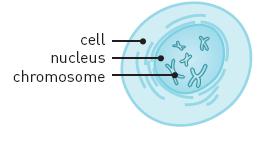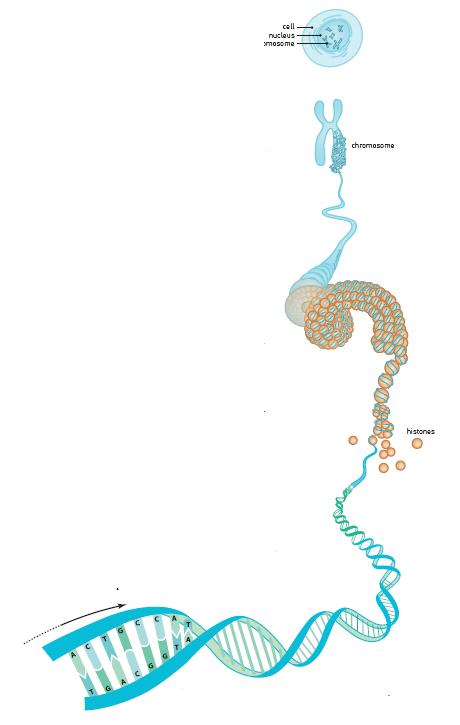A popular explanation of the ribosomes and the background for the selection of pioneers in the field, including Prof. Ada Yonat from the Weizmann Institute: part one of four

At the beginning of the twentieth century, the chemical basis of life was a mystery. Today, however, we know how many of the most important processes function, down to the atomic level. The 2009 Nobel Prize in Chemistry was awarded for the detailed mapping of the ribosome - the cell's independent "factory" for the production of its proteins. The ribosome translates the tolerant information stored in DNA. for structure and function.
The general theory of evolution, which was published by Charles Darwin in 1859, is based on the assumption that the characteristics of the organism are inherited and passed from generation to generation, and that from time to time random changes occur. "Successful" changes, which increase the survival chances of the particular organism, are those that are passed on to future generations.
From the moment the scientific community accepted Darwin's arguments, new questions emerged: what exactly is transmitted from generation to generation, where does the random change occur, and how do these changes ultimately manifest in the living organism?
The 2009 Nobel Prize in Chemistry is the third in a series of awards that show how Darwin's theories actually function at the atomic level. Images, obtained using various X-ray methods, show how DNA is coded. The simple is able to express itself not only in hearing, emotion or taste, or as muscles, bones and skin, but also as thoughts and language.
The trio of awards began with one of the most famous Nobel Prizes, that of 1962, when James Watson, Francis Crick and Maurice Wilkins received worldwide recognition for describing the atomic model of the DNA strand. The double strand. The second prize in the trio was awarded in 2006 to Roger Kornberg for X-ray structures that explain how information is copied into a piece of RNA. delivery person.
The ribosome translates genetic information into function

The three laureates of the 2009 Nobel Prize in Chemistry, Venkataraman Ramakrishnan, Thomas Straits and Ada Yonet, won the prize for mapping the ribosome - one of the most complex cellular mechanisms at the atomic level. The ribosome "reads" the information stored in the messenger RNA and, based on this information, builds the appropriate proteins. Scientists refer to this process as translation. During this translation process, the DNA/RNA language becomes to the language of proteins, and life reaches its full complexity.
The body contains tens of thousands of different proteins that control all its activities with miraculous precision. Examples of these proteins: hemoglobin (which transports oxygen from the lungs to the rest of the body), insulin (which controls blood sugar levels), antibodies (which capture and destroy harmful invaders to the body) and keratin (which is the structural component of hair and nails).
Ribosomes are present in all cells of all animals, from bacteria to humans. Since no production can exist without them, they are a perfect target for the activity of medicines. Many of today's antibiotic substances attack the ribosomes of the bacteria, without harming the human ribosomes. The knowledge provided by this year's Nobel laureates could, as a result, be extremely valuable to the development of novel antibiotic drugs.
Proteins - "chain of amino acid beads"
In the early XNUMXs, cell mapping progressed to the point where scientists realized that the traits of heredity are transmitted by the chromosomes. Chromosomes consist of nucleic acids (DNA) and proteins. The majority of the scientific community then believed that the proteins were the carriers of heredity since they were much more complex than DNA.
The scientific community was fascinated by the proteins. Several proteins were known to serve as building blocks. Others, like enzymes, initiate and control chemical reactions. However, even though they perform such different functions in the cell, all proteins are made up of the same building blocks, namely twenty different types of amino acids. Like beads on a chain, they are linked together in long chains. The connection between them, known as a peptide bond, is extremely stable. A protein chain can contain from ten to tens of thousands of amino acids. Insulin, for example, is much shorter than the hemoglobin found in red blood cells.
D. N. A. - Too simple a carrier for genetic traits
On the other hand, for DNA separation Scientists paid little attention in the 1871s. In XNUMX it was isolated from the cell nucleus by the Swiss researcher Johann Friedrich Miescher. He called the new substance a nucleus.
Similar to proteins, separated DNA (Wikipedia entry) consists of chains of beads that make up smaller beads. DNA, unlike protein, contains only four components, called bases (nucleotides). These carry four chemical groups: adenine (A), thymine (T), guanine (G) and cytosine (C). However, it seems that only four different components are too small a number to perform important functions in the body. Because of this, the scientists believed that DNA Used mainly as a structural skeleton of the chromosome proteins.
However, the year 1944 was the year of DNA's return. In what became known as the Ivory-McLeod-McCarthy experiment, D.N.A. From dead bacteria was introduced into the interior of living bacteria and turned them from inactive (disease-causing) to active. Despite the criticism leveled at the experiment, the DNA became a new focus for the attention of the scientific community. Understanding how DNA can To carry hereditary traits first came with the introduction of the atomic model of the double helix structure.
The elegant double coil
On the twenty-eighth of February 1953, James Watson and Francis Crick successfully assembled the pieces of the DNA sequence. For several years they tried to understand how the four bases of DNA are separated. can be integrated into a three-dimensional structure.
A clear and sharp X-ray diffraction image, produced by Rosalind Franklin in London, showed, among other things, that the DNA Forms a spiral, helical structure, consisting of two strands. A more careful examination showed that DNA, regardless of whether it originates from a bacterium, an insect or an insect, always contains the same amount of the base pair adenine and thymine, and the pair guanine and cytosine. However, Watson and Crick were working with an incorrect chemical formula of the bases. The correction of this error by one of their colleagues led to their understanding that adenine always attaches to thymine and that guanine attaches to cytosine. The nucleotide pair, or base pair, as they are commonly called, have the same size and fit perfectly into the double helix. The scientific community then realized that the genetic code lies in the sequence of bases found on each of the strands. For example, the sequence ATTGCCAT represents something completely different from the sequence GCGTATAG. In the next step, the scientists realized that the sequence of bases controls the sequence of amino acids in proteins. However, the question still remains: how?
This answer will be answered in part B of this review,
To Part C of the review, in which there is a description of Yonat's discovery about the Dead Sea bacterium
To the fourth and last part of the review, and further details on Prof. Yonat's discoveries
For the source of the review on the Nobel Prize website
More of the topic in Hayadan:
- The work of Prof. Yonat made it possible to understand the mode of action of five antibiotic drugs
- Ada Yonat won the 2009 Nobel Prize in Chemistry
- For an interview with Ada Yonat that was published in Scientific American about a year ago - polar bears and drunken ribosomes
- The ribosome cracker - an interview for the Weizmann Institute magazine
- The mysteries of the peptide bond - Weizmann Institute magazine

10 תגובות
What's right is right
1, you're an idiot
Sides with fascinating
Response to 1
Sometimes it happens that a person is a genius in one field and a laggard in another field. Sometimes an attachment cleverly disrupts the quoted words.
Don't get excited by everything you read in the paper.
exciting! Thank you.
In honor of the website management
I want to comment not on the article discussing Prof. Yonat's discovery but on what she said that the terrorists are not criminals but "only" terrorists. Since her statement has nothing to do with her work and scientific discoveries, my response also has nothing to do with these issues. I was very interested in the answer to the question, does Prof. Yonat think that Ami Popper, who killed 6 innocent Arabs, looking for work, and was sentenced to life imprisonment for it, should be released?
Sincerely
Yossi Gador
ID. 47767934.
Tel: 097452919